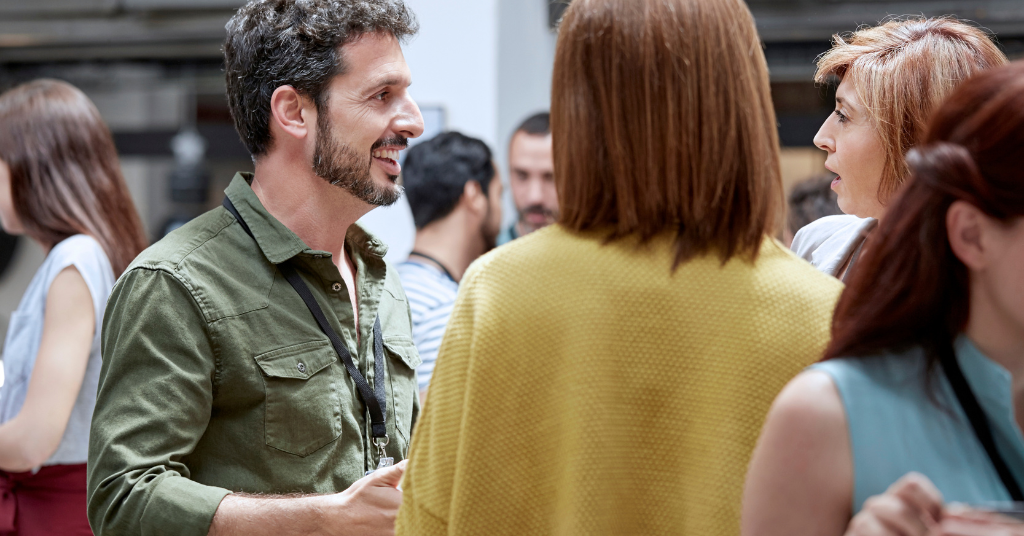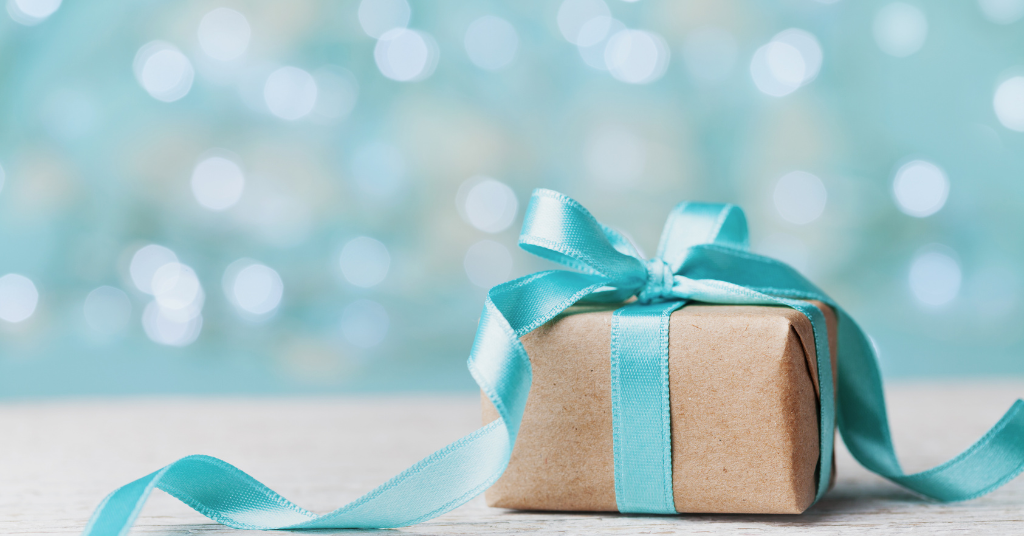
The Dealer’s Touch: Meet a Deaf Antiques Dealer
October 9, 2019
How my Roger Select helps me in the workplace
October 11, 2019My journey into the Deaf world

Living with hearing loss or deafness can be a journey. The path to understanding how someone identifies in the Deaf world is determined by the environment they were raised, the challenges they have experienced, the severity of their hearing loss, and the resources and tools they have available. It can also be a matter of going from a coping to thriving mindset, as one learns the benefits of being exposed to American Sign Language and Deaf culture. My story has been one with a lot of steps and experiences.
My background
I am 32 years old today and have been hard of hearing my entire life. For various reasons, I did not wear hearing aids for most of my life. I currently have a moderate hearing loss and wear Phonak Sky B-90 hearing aids. I participate in the Deaf community through volunteer work, attending events, and interacting with Deaf friends.
What is “Deafhood”
“Deafhood” is an individual journey. Everyone that is deaf or hard of hearing has a different relationship with how they identify. Some people consider themselves audiologically deaf or hard of hearing, and others consider themselves “capital D” Deaf, which commonly refers to the Deaf community and individuals who largely communicate with sign language.
The Deafhood Foundation describes Deafhood as, “a journey that each Deaf person undertakes to discover his/her identity and purpose in this life as a Deaf person among other people, and is a positive approach to re-affirming Deaf people’s role and place in society, history and the world.”
This is the story of my journey into the Deaf world.
Learning ASL
“I started taking ASL because I felt called to learn it. Little did I know how strongly I would fall in love with this language, how sensitive I would become to my own hearing loss, and how I would have a complete breakdown in this process.”
I entered my first ASL class about three and half years ago. This was the first time I was ever able to stay fully focused in a classroom. I enjoyed ASL, but it was a Deaf Culture class that connected me with my prior experiences on a deeper level.
Toward the end of my second year of ASL, I started to voice off more and often got irritated when I missed out on hearing things. I was still in denial about wearing hearings aids at this time (other than in voiced classroom settings) because I was not adjusted to them. Students would speak in the hallway before and after ASL class, so I’d avoid going early to be a part of it. I volunteered with a couple Deaf organizations and made it a point to only sign. It was in my third year of ASL that I started going to as many signing events as possible. Literally every chance I had to sign, I was there, doing everything I could to improve my skills.
Read more: Watch: How to Learn American Sign Language
Additional challenges
With a hearing loss, it is common to avoid more socialization than necessary. But the Deaf community is all about socialization. I had to learn social rules in group situations that I never took part in before and had a ton of social anxiety I had to work through. Different accommodations were tried in classrooms and at work. This took some adjustment. I was tired of missing out in social situations from the hearing world, but it also happened in the Deaf world because it takes a long time to become fluent in a language. What kept me going is telling myself: “Sign is something that CAN improve, but my hearing is not.”
“I was tired of missing out in social situations from the hearing world, but it also happened in the Deaf world because it takes a long time to become fluent in a language.”
I started to analyze every scenario from my past where I had missed out hearing. A safe place to fall in the Deaf world was needed, but I also knew that I was coming in with a lot more baggage than other people learning the language. Many classmates made friends easily, but I struggled to connect with others.
Meeting one-on-one with Deaf people
Some Deaf people agreed to meet with me one-on-one. I learned many things: that I could write my order down on my phone or a piece of paper when I go to a restaurant. When going for a walk, one person can sign while the other person is aware of the surroundings to make sure a biker or runner isn’t trying to pass. It’s okay to choose to use my voice when I want, but to not feel obligated to do so. I asked people about their stories. It was hard to keep up with the conversations, but I did it anyway. I was curious about how to deal with a variety of scenarios involving Deaf and hearing people.
Sharing my story
I suddenly felt a need to get my hearing loss stories out. Every time I analyzed my past or talked about my story, I would realize more things I had suppressed. All of the other students in my surroundings were fully hearing and studying to become interpreters. It felt like they were fascinated with the language, but not hearing loss itself.
I wanted real changes to happen in our communities so that services could become better for deaf and hard of hearing people, but I needed people I could relate with first. Almost every Deaf and hard of hearing person I could find in town, I met up with, but nobody in my surroundings seemed to be struggling or needing similar support to work through their pasts.
Am I on “The Deaf Journey?”
One day, I would say to myself, I am on “the Deaf journey.” The next day, I would say, “but I’m not deaf enough.” I actually wanted to identify as Deaf because I was inspired by what Deaf stands for. I wanted people in my life that “get” my past challenges. But my hearing loss looked small, and therefore I didn’t think anyone would actually understand when they saw me talk just fine one-on-one with other people.
Because my hearing loss is right around conversational range, this made me very confused on how to deal with situations. Sometimes I could hear people, while other times I could not. If I could hear someone, but did not respond back because I decided to voice off, I felt rude. But if that door was opened for conversation, then sometimes I would still miss hearing things. I went through a phase of wanting to be more deaf than I am.
On top of it, the more I accepted my “Deaf identity,” the more I felt like my hearing was getting better. I believe what was actually getting better was my focus, as the more I studied, the more my brain fog lifted. Was it even acceptable for me to identify as Deaf? I did not want to give people a false impression of who I am, and was told it is a cultural thing. But because I still wanted to use my voice at times, I struggled with this in my mind for a very long time.
My feelings are valid
I came to realize that even though my hearing loss isn’t as noticeable as someone who is fully deaf, my past challenges were still valid.
For example, in group situations for years, I had disabling anxiety because of not being able to hear everything. I was still left out of conversations. Every time I felt like I was overreacting, I had to remind myself of this and why I started this journey to begin with. Because if I went through this, I knew that it was possible that someone else has or is too, and is feeling the same way.
Not feeling like myself
Because I wasn’t yet fluent in ASL, I had a hard time just keeping up with the language, which made me feel like I couldn’t express who I am. On top of mostly voicing off in my surroundings for so long, I had many things running through my head that I was having a hard time expressing in sign. These things made me super isolated. I realized nobody in my surroundings saw the “real me” because I was working through a mess of emotions.
Exhaustion
This journey led me to a complete breakdown of exhaustion. I was tired of reaching out and trying so hard to improve my ASL. On top of it, I started to get wrist pain. I took a break and finally started wearing my hearing aids on a regular basis for the first time in my life. For so long, I felt as if I was living this false projection of me. I was angry from what I didn’t hear for so many years, and knew I needed to adjust, truly adjust, to the hearing aids and take a break from sign language. I knew I’d get myself back out to ASL events, which I have been at a slower pace. However, I had pushed myself too hard for too long.
My realization
One realization I have come to: I have never once fit in a “normal” box anywhere in this life. I’ve wandered for 32 years, searching for that place that feels like home. I thought I would find that in the Deaf world. What I realized is that I needed to find that from within. I am learning the most important part of this journey is acceptance and love for every part of myself, including those parts I have been refusing to face. I choose how I want to label myself and how I want to communicate. That may vary at times.
ASL is a huge part of my life and will continue to be, as I will continue to use the language in my interactions. Deaf people have opened my eyes to a world I never knew existed. I know my struggles and what I’ve been through, even if the rest of the world doesn’t understand. It is what shaped me into who I am and I am proud of this. Because of this, I am learning to embrace who I am as a Deaf person.
My observations/tips for anyone on the journey
- This is not an easy journey. It takes a long time to learn a new language, on top of having additional challenges that you must work through.
- There’s a good chance you will be the only deaf/hard of hearing student in your ASL class. You are NOT alone.
- Not everyone’s journey looks the same. You can put two people with the same hearing loss side by side and they can be completely different. The level of hearing loss does not always define the journey. It’s the challenges you overcome while working through it.
- ALWAYS be respectful and aware of your surroundings. If you are in a Deaf space, make sure you voice off.
- Realize the diversity in this community. Everyone’s stories and preferences are different. I am learning to ask each person individually about these preferences rather than assume.
- Challenge yourself and keep at it, but also don’t overdo it, either. Sometimes this means stepping back and taking a break for your own well being.
- You may feel like you drift away from your true self at points in this journey. You may feel like you are losing yourself, but you will get through and discover new things about yourself too.




